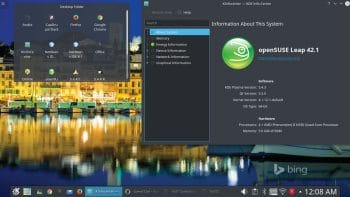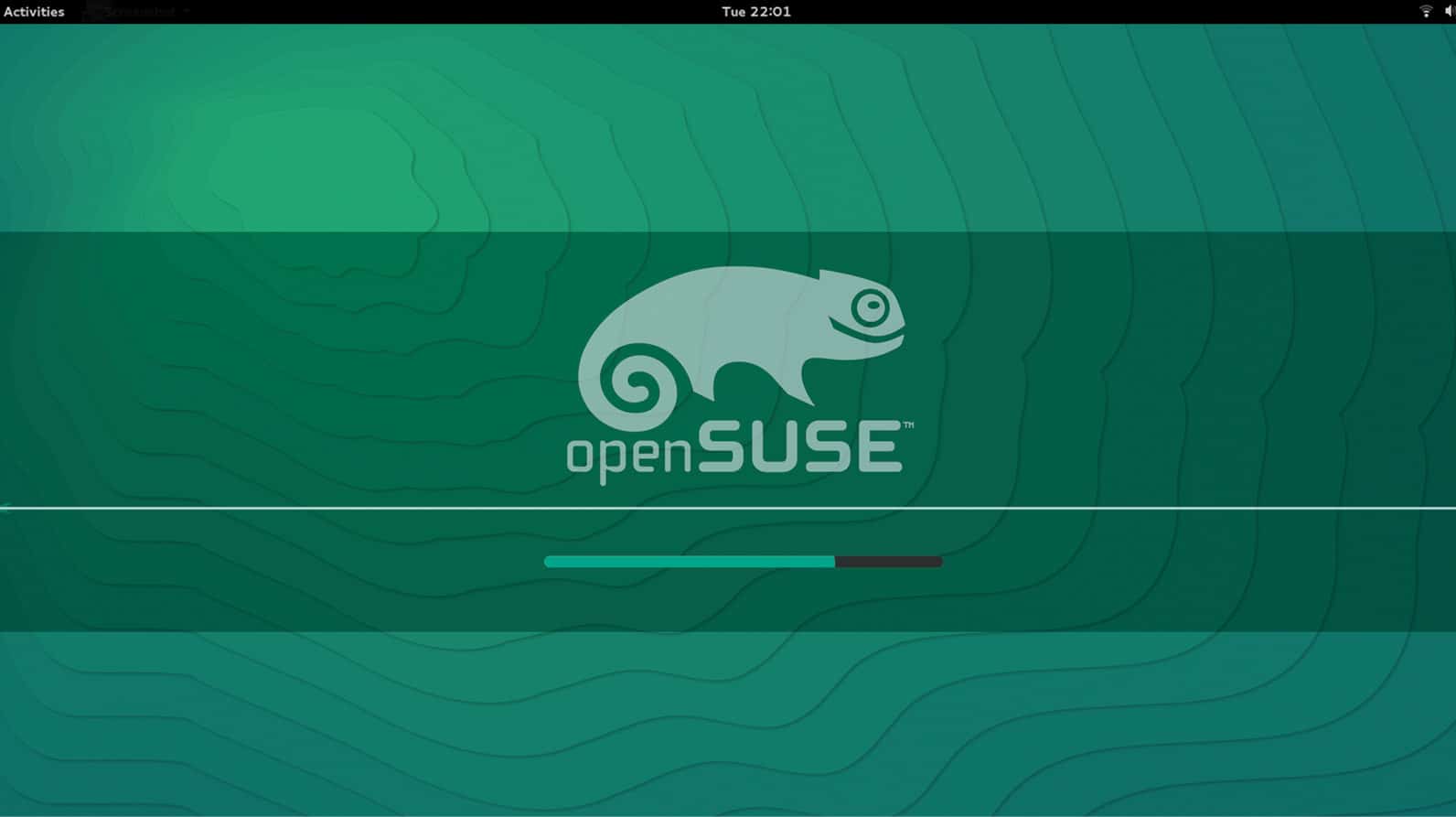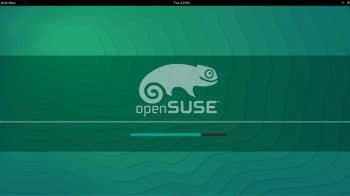On November 4, 2015, the openSUSE project released a new version of openSUSE Linux, openSUSE Leap 42.1, after exactly one year. This release has some very big changes. The openSUSE core is now based on SUSE Enterprise Linux (SLE) and future releases will be in sync with SLE. openSUSE Tumbleweed is a rolling release distribution, which contains cutting-edge but stable packages. With Leap, the openSUSE project is targeting enterprise workstations and servers. It is also suitable for people looking for long term stability and less frequent update(s). In other words, it is trying to compete with Ubuntu LTS releases and CentOS-like distros. It comes with kernel 4.1 (LTS series, 4.1.12), GNOME 3.16.4 (the latest is 3.18) and KDE 5.4.2. The default is GCC 4.8.5 but GCC 5 can be installed from official repos. For those looking for cutting-edge packages, Tumbleweed is the right choice.

Installation
For installation, I usually download the KDE live CD and write that to a USB drive using the rufus (https://rufus.akeo.ie) utility. Unfortunately, this time only the DVD is available. Downloading the DVD takes four to five hours on my 2Mbps connection. And saving it on a USB stick, or writing it to a DVD and installing it will take another hour or more. You can use the openSUSE 42.1 DVD bundled with this issue of OSFY magazine to get started. I decided to try a network installation. For those who do not have the DVD, the net install ISO is about 80MB, so it can be downloaded quickly. I wrote it to a USB stick using rufus and booted from it. You can find a detailed installation guide at https://en.opensuse.org/Portal:42.1
Before going further, let me tell you about my hardware. It is a five year old laptop, the processor is AMD Phenom II X4 N 930, with 6GB RAM, with dual graphics (Radeon HD 4250 and 2GB Radeon HD 5420). I connected the laptop to the Internet using Wi-Fi, and set up the network configuration to DHCP at the first screen. I was not able to connect to the Internet. The error message stated that the DHCP request had failed. So I connected the laptop to the modem through a network cable and started the installation.
Once the graphical Yast installer is loaded, the steps are the same as a DVD installation. There is no change in the installer. After selecting the language, keyboard and configuring partitions, it shows a nice summary of items. Here, the user can check different items, so dont forget to check where Grub is being installed it must be MBR. Since I was doing a network installation, I de-selected some packages like LibreOffice, the Gimp, etc, to save some time, with plans to install them later. Downloading and installing packages took about 100 minutes (lesson learnt: a 2Mbps connection is not good enough for online installation).
The installation went smoothly without any hiccups. All hardware was detected and configured properly without any manual configuration. I have a Logitech wireless keyboard and mouse combo, which was detected during installation.
I chose KDE as the default desktop. Other desktop environments are also available like GNOME 3.16.2, XFCE 4.12.1 and Mate 1.10.
Post-installation software
After installation, I rebooted into an all-new KDE 5/Plasma 5 desktop. openSUSE has the best implementation of KDE. It runs smoothly. The new Plasma desktop looks very sleek and shiny. It is very responsive and applications open very quickly; Dolphin opened in a second and Google Chrome starts faster than on previous openSUSE releases. The dark theme look is much more consistent across the system. Some long-pending issues have been resolved in Plasma 5, like power management now recognises video playing on VLC and does not dim the screen. It also recognises YouTube video playing in the browser.
Bluetooth did not work well I was able to connect Bluetooth speakers the first time but did not get any sound. And when I tried to reconnect, the system couldn’t find them even though they were placed right next to the laptop. So the blue devil is still very buggy. The second issue I faced was with the wallet manager I was not able to disable it. KDE Control Centre doesn’t have an option for the wallet manager. There is a separate application for the wallet manager which does not respond to any action, so you can’t disable it.
There are plenty of applications available in default repos; if not, then these must be in the OBS (openSUSE build service) repo. For installing VLC and other multimedia apps, you need to add the packman repo (it is not an OBS repo).
I tried installing Filezilla, but it is not available in the default repos. I searched on http://software.opensuse.org and found it in a few other repos, and chose to install it from the network repo. Similarly, I found MonoDevelop in the Mono Factory repo; both packages were earlier in default repos. For a stable environment like a server or enterprise desktop, it is not a good idea to add a factory repo.
The all-new openSUSE Leap is a solid, very stable release more so than previous releases. KDE 5 is not completely ready, though the Plasma desktop is good. Yet, many KDE applications are being ported and still have bugs. Some of the packages are not in default repos, which they were earlier. I hope this will be fixed soon.
From now onwards, SUSE will take care of openSUSE Core; so I am sure that over a few releases, it will mature into an enterprise-class OS that can be used for desktops and servers alike. It will benefit the community also.
As some resources get freed from taking care of openSUSE Core, we will surely see some improvement in community contributions and Tumbleweed will get more love. In my opinion, OpenQA played an important role in improving the overall quality of the distribution.











































































